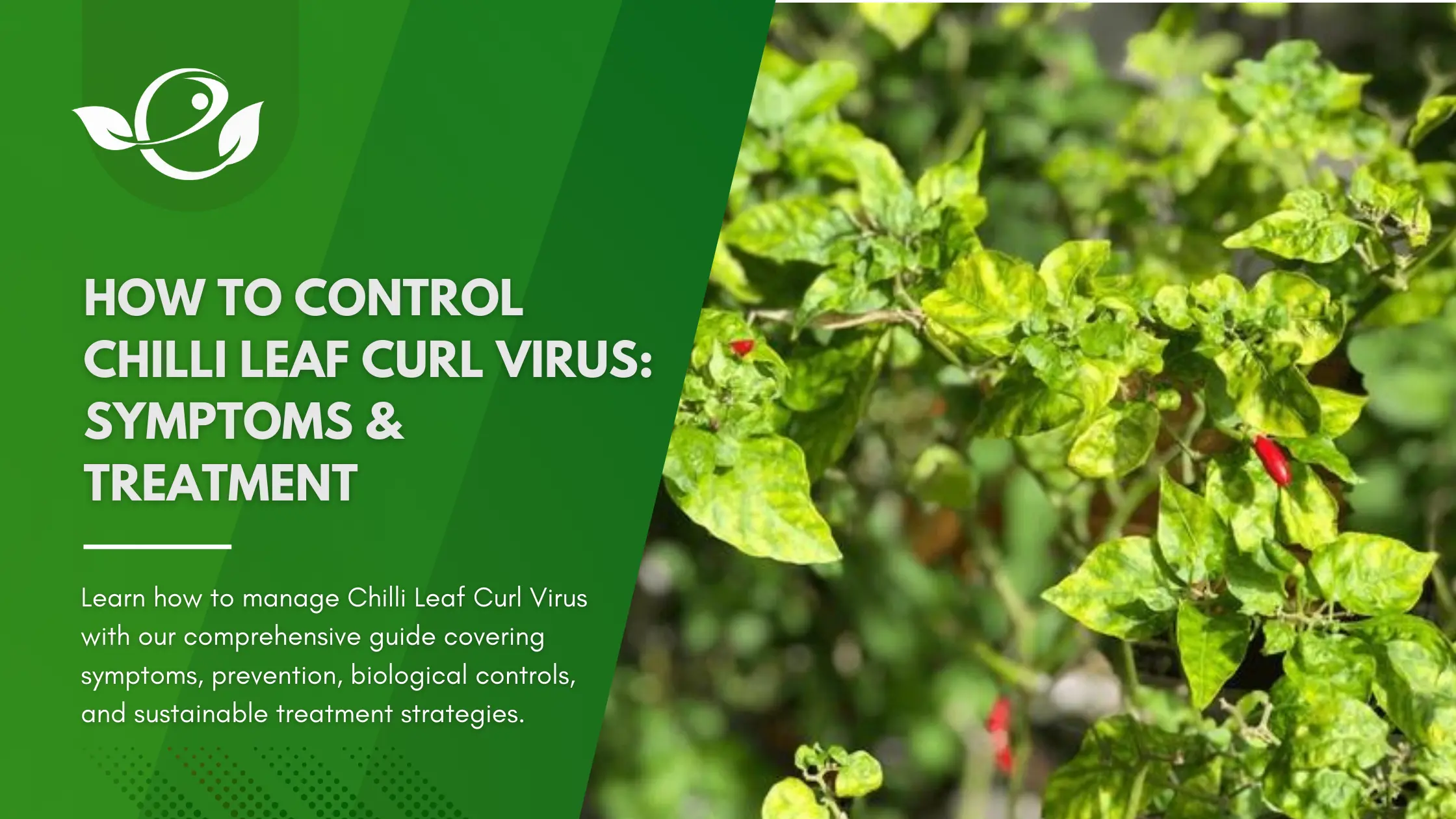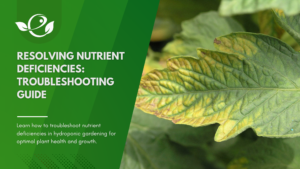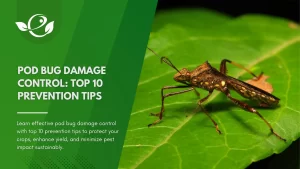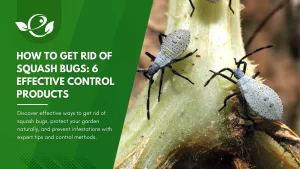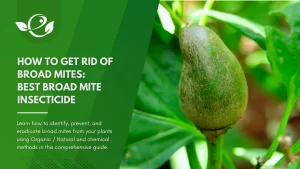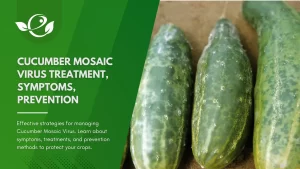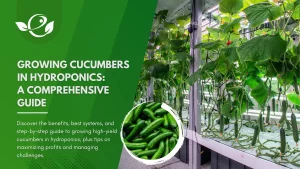Table of Contents
Chilli plants, a vital crop in many agricultural economies. These vibrant, flavorful fruits are staples in various cuisines, contributing to dishes with their heat and unique taste. Beyond their culinary uses, chilli peppers are also valued for their medicinal properties and their role in traditional remedies. Given their importance, the health and productivity of chilli plants are of paramount concern to farmers and the agricultural industry.
Despite their robust nature, chilli plants are vulnerable to a range of diseases and pests that can severely impact their growth and yield. One of the most damaging diseases affecting chilli crops is the Chilli Leaf Curl Virus (CLCV). This viral disease has become a significant threat in many chilli-growing regions, leading to substantial economic losses and posing a persistent challenge for farmers. CLCV is primarily transmitted by whiteflies (Bemisia tabaci), small insects that feed on the sap of plants. These vectors acquire the virus from infected plants and spread it to healthy ones, facilitating rapid disease proliferation.
Understanding CLCV is crucial for developing effective management strategies. This comprehensive guide aims to provide an in-depth exploration of CLCV, covering its symptoms, lifecycle, transmission, and control measures. By gaining a thorough understanding of the virus and its impact, farmers can implement effective strategies to mitigate its spread and safeguard their crops.
Understanding Chilli Leaf Curl Virus (CLCV)
Definition and Nature
Chilli Leaf Curl Virus is a viral pathogen that infects chilli plants, leading to a condition characterized by curling leaves, stunted growth, and reduced fruit quality. The virus is primarily transmitted by whiteflies (Bemisia tabaci), which act as vectors, spreading the virus from infected to healthy plants. Understanding the nature and behaviour of Chilli Leaf Curl Virus is essential for implementing effective control strategies.
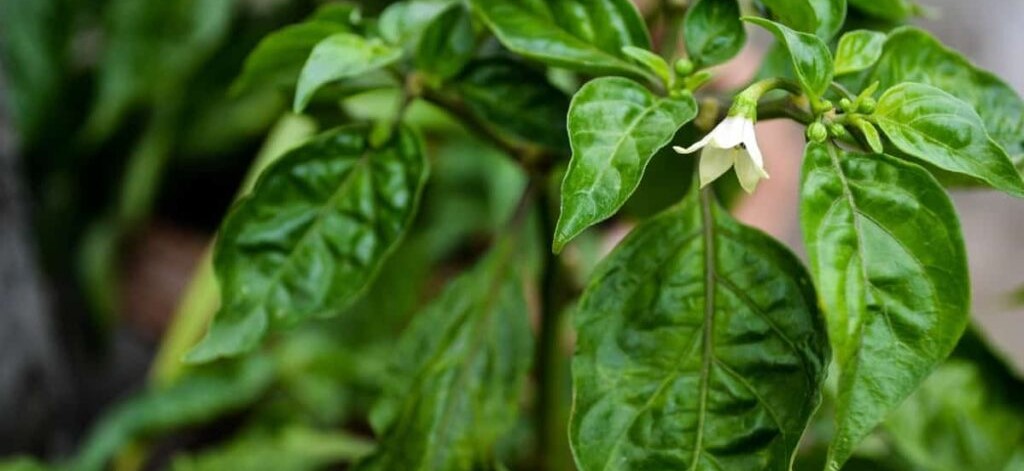
What caused it?
Symptoms are caused by begomovirus, which is primarily transmitted through whiteflies in a persistent manner. They are characterized as 1.5 mm long, waxy white wings with a pale yellow body and are frequently found on the lower side of the leaves. The spread of the disease depends on the wind condition, which will indicate how far the whiteflies can travel.
Whiteflies are most problematic in the mid-to-late season. Since the disease is not seed-borne, the virus persists in the landscape via alternative hosts (such as tobacco and tomato) and weeds. Some additional factors that can favor the development of the disease are recent rainfall, infected transplants, and the presence of weeds. In nurseries, chilli plants are most prone to infection during the seedling and vegetative stages.
Geographical Spread
Chilli Leaf Curl Virus is commonly found in tropical and subtropical regions, where warm temperatures and high humidity create ideal conditions for whitefly populations to thrive. Regions such as South Asia, Southeast Asia, Africa, and parts of the Americas are particularly affected. Recognizing the geographical distribution of the Chilli Leaf Curl Virus can help in planning regional and localized control measures.
Symptoms of Chilli Leaf Curl Virus
- Symptoms of Chilli Leaf Curl Virus are characterized by upward curling of leaf margins, yellowing of veins and reduction of leaf size.
- Additionally, leaf veins become swollen with shortening of internodes and petioles.
- Infected leaves may also develop a rough, leathery texture.
- Older leaves become leathery and brittle.
- If plants are infected during the early season, their growth will be stunted, resulting in significant yield reduction.
- Fruit formation in susceptible cultivars is rudimentary and distorted. The virus causes similar symptoms as the feeding damage of thrips and mites.
- Infected plants typically show reduced vigor, poor growth, and a general decline in health. Fruit production is not only diminished but the quality of the fruit is also adversely affected, leading to economic losses for farmers.
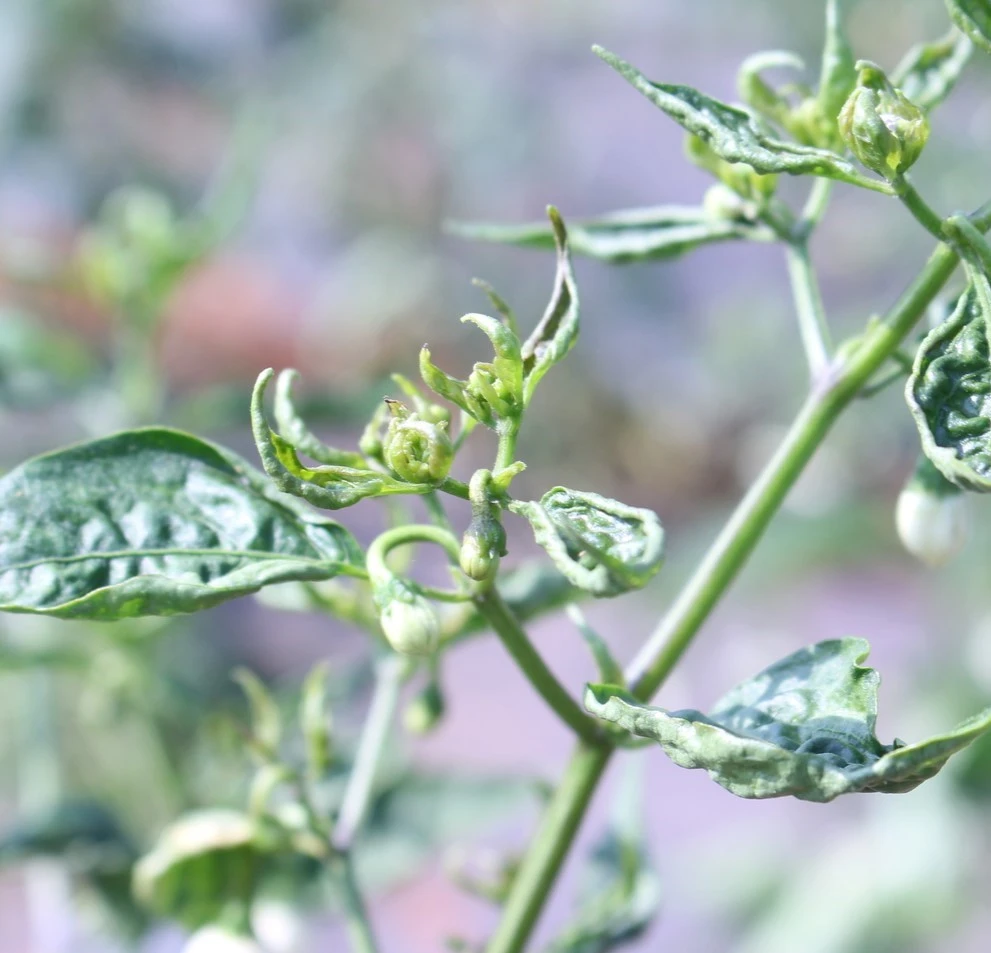
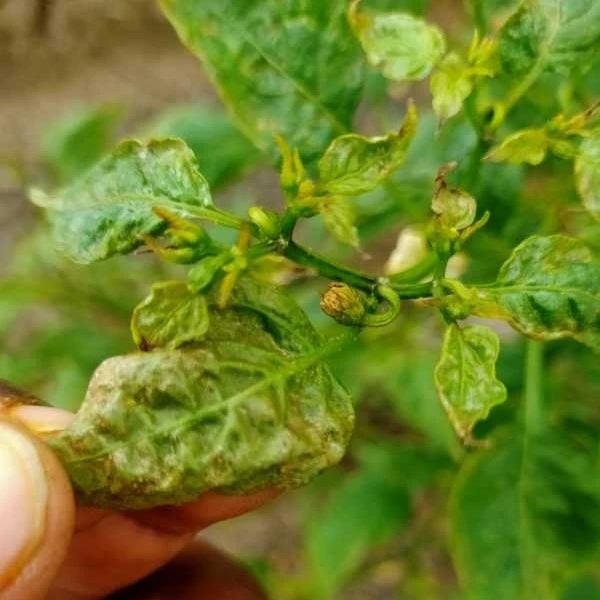
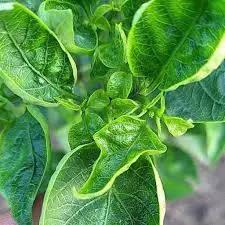
Lifecycle and Transmission of Chilli Leaf Curl Virus
The lifecycle of the Leaf Curl Virus begins with its introduction into the plant by whitefly vectors. Once inside the plant, the virus replicates and spreads systemically, affecting various plant tissues. Understanding the lifecycle helps in developing strategies to interrupt the virus’s progression and minimize its impact.
Whiteflies, especially Bemisia tabaci, are the primary vectors responsible for transmitting Chilli Leaf Curl Virus. These small, sap-sucking insects acquire the virus by feeding on infected plants and subsequently spread it to healthy plants. Effective management of whitefly populations is crucial for controlling the spread of Leaf Curl Virus.
Preventative Measures
- Use the available plant-resistant species and extract seeds only from virus-free plants.
- Raise at least two rows of a barrier crop such as maize, sorghum or pearl millet around your fields.
- Control the whitefly population and protect particularly seedlings from them by establishing nylon nets over the nursery plants.
- Monitor regularly to detect early infections by looking for symptoms of curled leaves and stunted growth.
- Proper plant spacing ensures adequate air circulation, reducing humidity levels that favor whiteflies. Regular pruning helps remove potential sites for whitefly infestation.
- Position a number of sticky yellow traps or sheets in your field that attracts whiteflies.
- Control the vector by growing the seedlings under the net, which can also prevent whiteflies attack the seedlings.
- Ensure a weed-free field and surroundings.
- Removing and destroying infected plants prevents them from serving as reservoirs for whiteflies. Proper disposal methods, such as burning or deep burying, are recommended.
- Plow deep or burn all plant debris after harvest.
- Encourage beneficial insects by growing mixed cropping.
- Crop rotation and intercropping can reduce the prevalence of whiteflies by disrupting their lifecycle.
Biological Control Methods
Natural Predators
Biological control methods, such as introducing natural predators, can help manage whitefly populations. Predators like ladybugs, lacewings, and spiders feed on whiteflies, reducing their numbers naturally. This eco-friendly approach minimizes the need for chemical pesticides and promotes a balanced ecosystem.
Biopesticides
Biopesticides, such as neem oil and insecticidal soaps or horticultural oils (petroleum-based oils), offer an organic alternative to chemical pesticides. These substances disrupt the lifecycle of whiteflies without harming beneficial insects or the environment. Regular applications can keep whitefly populations under control and reduce the incidence of Chilli Leaf Curl Virus.
Companion Planting
Companion planting involves growing plants that naturally repel whiteflies alongside chilli crops. Plants like marigolds, basil, and garlic emit scents that deter whiteflies, providing a natural barrier against these pests. Companion planting can enhance the overall health of the garden ecosystem and reduce pest pressures.
Chemical Control Methods
Always consider an integrated approach with preventive measures together with biological treatments, if available. There are no known effective methods for preventing or reducing chilli leaf curl virus. Follow chemical control methods, such as imidacloprid or dinotefuran. Spray seedlings with imidacloprid or lambda-cyhalothrin before transplanting to control the vector. Excessive use of insecticides will harm beneficial insects and also make many whitefly species to become resistant. To prevent this, ensure proper rotation between insecticides and use only selective ones.
Chemical treatments, such as plant antivirals, can help suppress the severity of CLCV infections. These treatments inhibit viral replication within the plant, reducing the overall impact of the disease. They should be used as part of a comprehensive management plan that includes cultural and biological controls.
Integrated Pest Management (IPM)
Integrated Pest Management (IPM) combines various control methods to manage pests in an environmentally and economically sustainable way. IPM emphasizes monitoring, prevention, and the use of multiple tactics to keep pest populations below damaging levels. This approach ensures long-term control of Chilli Leaf Curl Virus and its vectors.
Conclusion
Controlling the Chilli Leaf Curl Virus (CLCV) is a complex but essential task for chilli farmers worldwide. Prevention is always better than cure, and this principle holds especially true for managing CLCV. The impact of this virus on chilli crops cannot be overstated, as it directly affects yield, quality, and, consequently, the economic viability of chilli farming. Chilli Leaf Curl Virus is a persistent and multifaceted problem that requires a combination of preventative, biological, chemical, and cultural control measures. No single method is sufficient on its own; rather, it is the synergy of multiple strategies that offers the best chance of controlling this virus effectively.
The insights provided in this guide are intended to empower farmers, agricultural professionals, and enthusiasts with comprehensive knowledge and practical strategies to manage and mitigate the effects of the Chilli Leaf Curl Virus effectively.
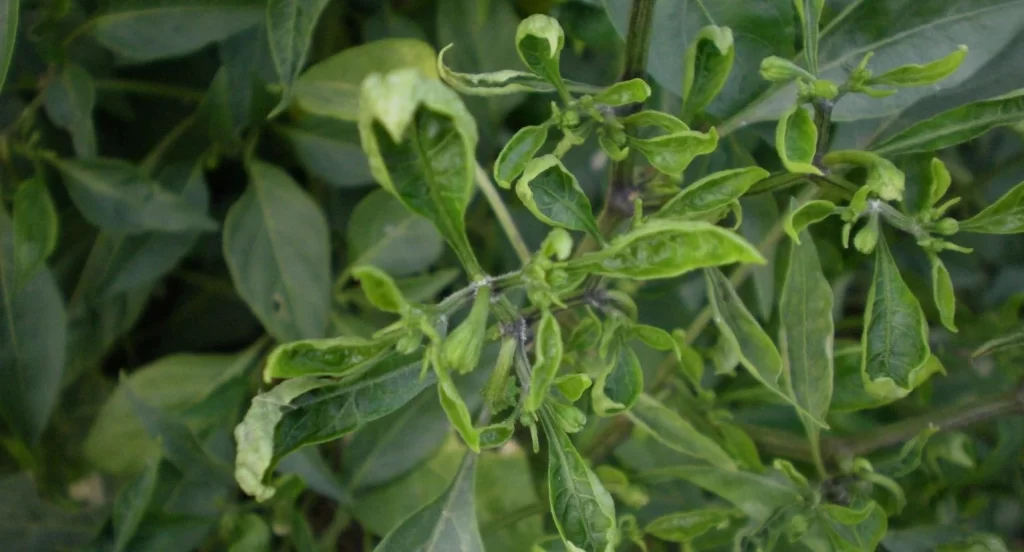
FAQ
What is the vector of the leaf curl virus in chilli?
The primary vector of Chilli Leaf Curl Virus (CLCV) is the whitefly, specifically Bemisia tabaci. These small, sap-sucking insects feed on the leaves of chilli plants, acquiring the virus from infected plants and then transmitting it to healthy plants as they move and feed.
What is the cause of leaf curl disease?
Leaf curl disease in chilli is caused by the Chilli Leaf Curl Virus (CLCV), which belongs to the genus Begomovirus within the family Geminiviridae. The disease manifests when the virus is introduced into the plant cells by whitefly vectors. The virus disrupts normal cellular processes, leading to the characteristic symptoms of leaf curling, yellowing, and stunted growth.
How do you treat leaf curl disease?
Treating leaf curl disease involves a combination of cultural, biological, and chemical methods:
1. Cultural Practices: Implement crop rotation, and intercropping, and maintain proper plant spacing to reduce whitefly habitats. Practice good field sanitation by removing and destroying infected plants.
2. Biological Controls: Introduce natural predators of whiteflies, such as ladybugs and lacewings, and use biopesticides like neem oil to reduce whitefly populations.
3. Chemical Controls: Apply selective insecticides to manage whitefly populations and use plant antivirals to suppress viral activity.
Does neem oil stop leaf curl?
Neem oil can help manage leaf curl by reducing whitefly populations, which are the vectors for CLCV. Neem oil acts as an insect repellent and disrupts the lifecycle of whiteflies, thereby reducing the incidence of virus transmission. However, neem oil alone may not completely stop leaf curl but can be an effective part of an integrated management strategy.
What spray do you use for leaf curl?
It can be controlled quite easily by applications of copper oxychloride or lime sulphur at any stage during dormancy.
1. Neem Oil: Acts as a natural insecticide and repellent.
2. Insecticidal Soaps: Effective against whiteflies without harming beneficial insects.
3. Selective Insecticides: Products containing imidacloprid or thiamethoxam can be used, but should be applied carefully as part of an IPM strategy.
4. Plant Antivirals: Compounds that inhibit viral replication can also be used to reduce the severity of infection.
How to treat leaf curl naturally?
1. Biopesticides: Use neem oil or insecticidal soaps to manage whiteflies organically.
2. Spray at bud-swell with copper hydroxide or copper oxychloride and ensure thorough coverage over all branches.
3. Timing is critical to prevent the fungus from entering the plant when new leaves are vulnerable.
